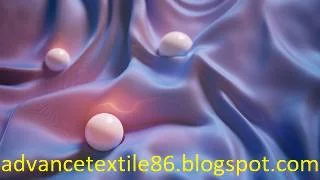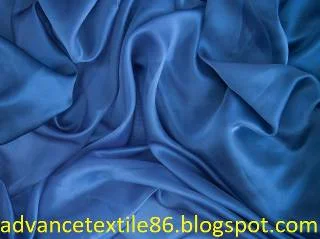Artificial silk
Any synthetic fiber that resembles silk, but typically costs less to produce is
called Artificial silk. It is a very popular element of fashion, as it goes in
many different outfits and it is a budget option. When it is made in factories,
it is processed in large quantities at one time and requires less labor and
skill, on the other hand, silkworms make the original silk and it takes a lot
of skill, effort, and time to process the worms and remove the silk from them. Artificial silk is cheaper than natural silk. Various items of clothing include artificial silk.
These include dresses, blouses, scarves, and women's underwear. Sometimes men's
shirts and underwear are included.
History of artificial silk
The
first successful synthetic silks were developed by Cellulose Fiber in the 1890s
and marketed as Art Silk, a particular manufacturer's business name. In 1924,
the fiber was officially renamed Rayon in the United States, although the term
viscose continued in Europe. The material is commonly referred to as viscose
rayon in the textile industry.
In
1931, Henry Ford hired chemists Robert Boyer and Frank Calvert to make
artificial silk made from soybean fiber. They succeeded in making textile
fibers from hard or decorated cut soy protein fibers in a formaldehyde bath
that was named Azlon. It can be used to make suits, felt hats, and overcoats.
In 1940, pilot production in Azlan reached 5,000 pounds per day, it never came
to the commercial market, but Dupont's nylon was the winner in its search for
artificial silk.
Properties of artificial silk
i.
Artificial silk is a versatile fiber that is used for various purposes.
ii.
It is extremely soft, cool comfortable, and has very good absorbent properties
but may be able to retain body heat and is used in humid steamy weather
conditions.
iii.
It has the same comfort property as natural fibers.
iv.
It can replicate the feel and texture of silk, cotton, linen, and wool.
v.
It can easily be dyed in a variety of colors
vi.
It has a very lower elastic recovery of any fiber.
vii.
Usually, artificial silk fibers are recommended care for dry cleaning purposes only.
The manufacturing process of artificial silk
Silk
is now made artificially by mechanical process from wood pulp. Wood pulp made
from spruce trees and is dissolved in various chemicals and the solution is
spun into beautiful lustrous yarn, sheen, and gloss. Now rated as the best of
them all for making the artificial filaments are nitro-cellulose process. It
depends on the use of the same solution that is used for making celluloid and
guncotton and the first yarn made from it was highly explosive and dangerous to
handle. The nitrocellulose solution is made by dissolving wood pulp in ether and is
broken down by extremely fine jets or capillary tubes of glass. As it grows in
a water bath or in the air, cellulose is partially solidified in the solution
and becomes an adhesive filament. 12-20 of these filaments are joined together
and threaded in the same way that the threads of cocoon silk are cut or thrown
together. While artificial silk threads are stretched and dried in drums or
reels when they are still soft and sticky, during this process they take on the
beautiful luster that silk manufacturers so eagerly explore.
Uses of artificial silk
i.
Artificial silk fibers are used in the apparel industry like Aloha shirts,
blouses, dresses, Jackets, Lingerie, scarves, suits, ties, hats, and socks.
ii.
Some are used for filling in Zippo lighters, furnishings including bedspreads,
bed sheets, blankets, window covers, upholstery, and slipcovers.
iii.
Some industrial uses like medical surgery products, non-woven items, tire cords,
and some other uses like diapers, towels, and feminine hygiene products.
iv.
It is used to create gorgeous lehenga cholis and salwar kameez sets.
v.
It is used to create Indo-Western clothing items like long skirts, Kurtis,
asymmetric pants, and more, thus making this fabric diverse.
vi.
It is used to create accessories like handbags.










0 Comments